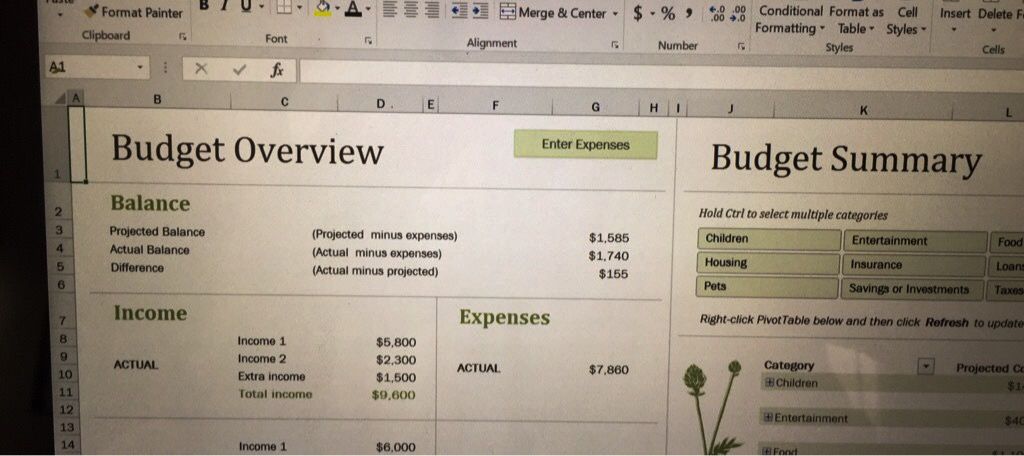When we found out we were having another baby, my husband and I decided that I should extend my maternity leave by tagging six months of unpaid leave to the end. There were a million great reasons to do this:
- I’d have more time with the baby, and more time with our two older kids.
- The time of my return to work would give us two full summers at home.
- It would be (hopefully) easier to go back to work full-time with an 18-month-old than a one-year-old.
- I could take the time without giving up my job.
There was really only one reason not to do it: Money. We’d structured our lives as a two-income family. We were adding another person to our mix (not cheap). And we were still renovating our home (really not cheap). If I was going to give up half a year’s salary, we had to make sure we could still manage our living expenses without taking on debt.
Easier said than done.

It’s amazing how quickly money can slip through your fingers, and how easy it is to prioritise immediate needs (and wants) over long-term savings goals. I’d planned to start setting money aside six months before my leave began. But then we decided to redo the shingles on our house. And both of my kids and my husband had birthdays. And then it was Christmas. And before I knew it, baby was here.
My savings had to start in earnest now. Only, we really needed to take down the rest of our dying poplar trees, which were becoming a safety hazard for us and our neighbours. And then we ripped out our dog-pee stained basement carpet (another hazard) and replaced that. And then we planned a family vacation. And the money in my savings account just wasn’t growing as fast as my time to save was running out.
It was right around this time that I started watching a show called Money Moron. In the show (you can watch it on Slice), host Gail Vaz-Oxlade gives “money morons” the opportunity (ultimatum?) to tackle their dire financial situations head-on by presenting them with a series of challenges designed to teach them to better manage their money.
Now I generally believe that day-time TV is a mind-numbing time suck, but I was only a few minutes into the first episode of this show when I had an ah-ha moment.
I was a money moron.
Here’s what else I learned.
Step 1: Track your spending.
One of the first things that Gail does in every episode is hand the moron a notebook and tell them to start tracking their spending — every nickel, every cent. And every single one of them is shocked — shocked — when they find out how much they’re actually overspending, and what they’re overspending on.

I decided to start tracking my spending too. It wasn’t that hard. Since I pay for everything with debit, most of the information I need is in my online bank statements, although I occasionally need to break down receipts from some stores (like Costco) into my different spending categories (like groceries, gifts and home improvements).
I was kind of surprised to see how much money I was funnelling into our house. Not just on planned renovations, but on random, unplanned and often unnecessary expenses.
I was even more surprised to see how much money I was spending on food (thanks Costco). Groceries. Restaurants. Take-out.
But I was shocked — shocked — to see how much money I was wasting on stuff. On things that I wanted, but didn’t need. On junk.
I once read that the best way to determine a person’s true priorities is to look at how they spend their time and their money. When I took an honest look at how I was spending my money, it didn’t match my priorities. Or at least not what I wanted my priorities to be. I thought of what I was saving for, why I’d wanted to take an extended leave in the first place — to spend more time with my kids — and I was squandering that opportunity away on things.
Step 2: Set a budget.
The next thing Gail gets her morons to do is build a balanced budget. As Mindy Crary writes in this Forbes.com article: “Budgets are what separate the financially successful from the financially mediocre. Bottom line, the way you become financially successful is to spend less than you earn.”

Using the previous months’ spending as a guide, I built a budget for June in an Excel spreadsheet. Then I broke down my monthly income by week, and added columns to track each week’s spending in each category. I find that breaking my income and expenses down by week makes it easier to keep track of where I’m at and harder to justify blowing my entire budget at the start of the month.
Once I had June set up, I created new spreadsheet pages to track my spending for the rest of my maternity leave, and entered in my known expenses for the foreseeable future. Things like savings, and mortgage and vehicle payments (actual), and utility bills (estimates). Then I subtracted these amounts from my weekly income to show how much money I had left to cover more flexible expenses like groceries, clothing, entertainment, etc. I also entered one-time expenses, like my kids’ hockey fees, as soon as I was aware of the cost and due date so that I could plan ahead instead of trying to come up with the extra cash as the last minute.
I’ve been tracking my spending and maintaining a budget for four months now, and I have yet to end a month with the same budget I started with. But keeping a budget is forcing me to take a closer look at my (and my family’s) needs and wants. It’s helping me to cut back on my blind spending and be more mindful of my money.
Slowly, imperfectly, I’m learning how to maintain the right balance.
Step 3: Plan for the future.
You have to do steps 1 and 2 first if you want to have any success with Step 3. As Crary writes, “I also noticed that the people who were struggling, or who were trying to figure out how to pay for the things that they wanted, like vacations, remodels and other big ticket items generally had no idea where their money went. It actually didn’t matter how much or how little their incomes were, I started to see that lack of budgeting created an ambiguity in their entire financial situation.”
Once Gail’s money morons have their day-to-day spending on track, she challenges them to build a plan for the future. What do they really want? When do they want it? How are they going to pay for it? Most people already know what they want. A wedding. A car. A house. Retirement.
But Step 3 isn’t just figuring out what you want to work toward. It’s also about being realistic about what it’ll take to get there. Money, for the most part, is finite; the more you spend on one area of life, the less you have for the others. What do you want? And what are you willing to give up to get it?
I know what I want. I’ve figured out what I need to give up. And now I also have the knowledge and tools to keep me on track to get it.
Money moron? Hell no. I’m going to be a money maven.
Hi! I am a robot. I just upvoted you! I found similar content that readers might be interested in:
http://redhens.ca/2016/09/three-steps-to-better-money-management/
Downvoting a post can decrease pending rewards and make it less visible. Common reasons:
Submit
Congratulations on your new arrival!
Some great tips thanks for sharing
Downvoting a post can decrease pending rewards and make it less visible. Common reasons:
Submit